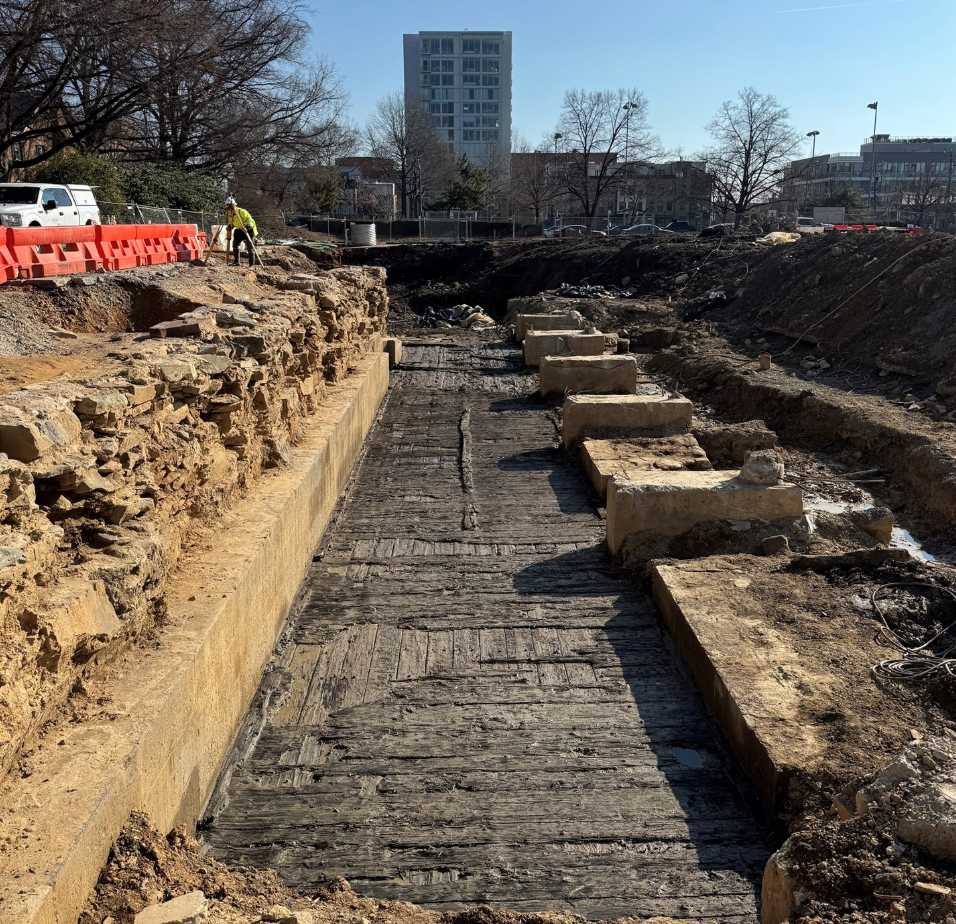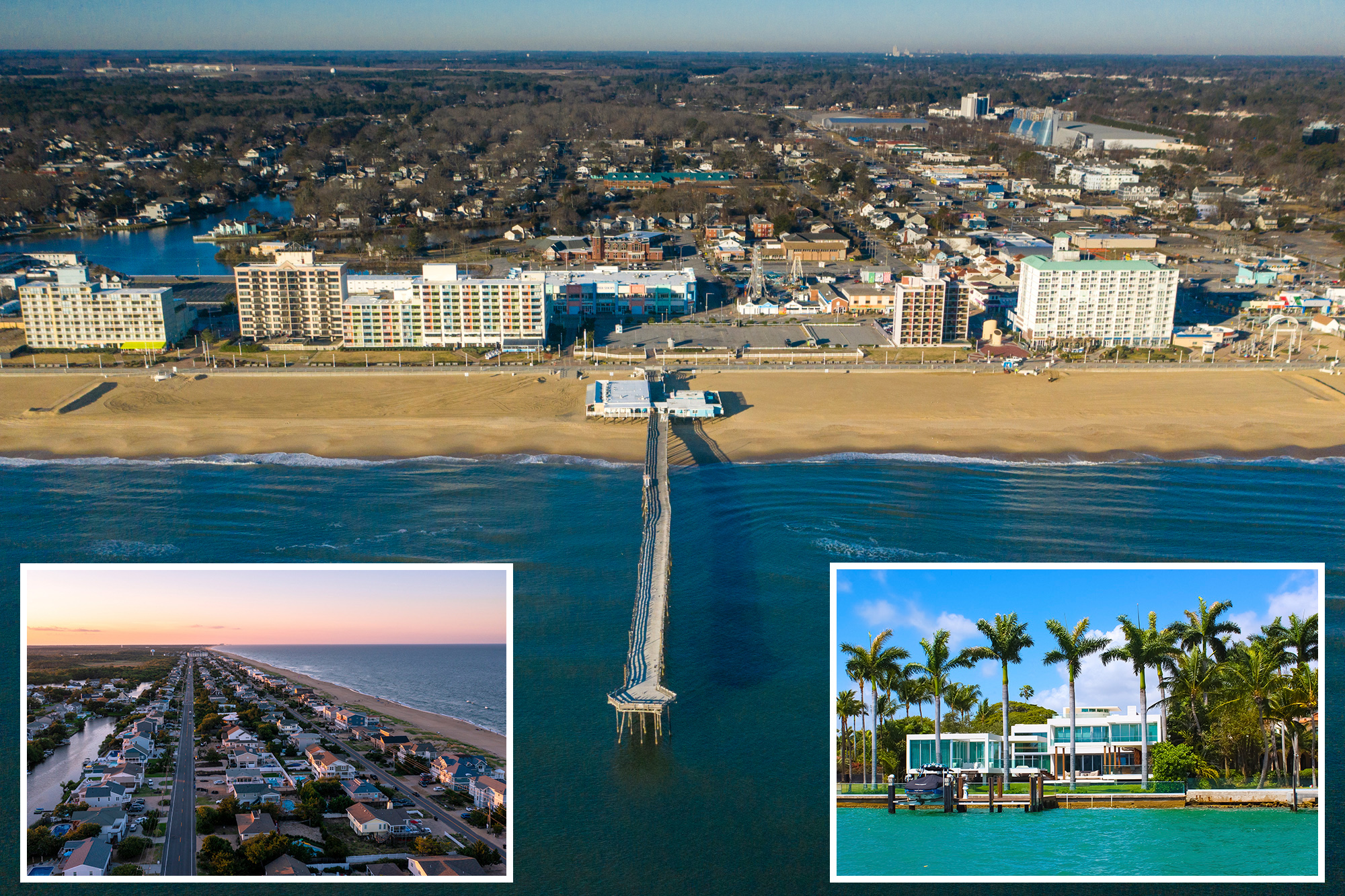V
iew of Alexandria Canal lock number 4 from North Pitt Street (via City of Alexandria)
DC real‑estate firm Carr Properties has earned Alexandria’s premier archaeology honor. On Tuesday, Oct. 28, the City Council will formally present the award and praise the company for its “commitment to the highest quality archaeological preservation at the Alexandria Canal site in Old Town North,” per the proclamation. Carr collaborated with the city after discovering historic layers while converting a 1980s office building into mixed‑use apartments.
The award, created in 2007, bears the name of late activist and retired U.S. Army colonel Bernard “Ben” Brenman, who chaired the city’s archaeology commission for 21 years. It honors businesses, organizations, families, professional preservationists, volunteers, students, and others who have advanced archaeological investigation, research, site protection, education, public interpretation, open‑space design, collections, or conservation.
The Alexandria Canal, a seven‑mile waterway finished in 1831, was built with slave and forced labor, according to the Office of Historic Alexandria. ALXnow has contacted Carr regarding the award.
City proclamation (excerpt):
WHEREAS the Alexandria Archaeological Commission has established the Bernard “Ben” Brenman Archaeology Award to recognize partners who contribute to Alexandria’s archaeology and history;
WHEREAS leaders like Brenman envisioned a community archaeology program valuing sites across the city;
WHEREAS the award honors high‑quality work, innovation, commitment, or extraordinary efforts in preservation, research, education, public appreciation, and advocacy;
WHEREAS the 2025 award highlights the excavation, preservation, and stewardship of significant seaport history, including a major segment of the fourth lock and third basin of the Alexandria Canal built in 1845;
WHEREAS Carr Properties receives the Outstanding Developer award for its dedication to archaeological preservation at the canal site, partnership with the Alexandria Archaeology division, Friends of Alexandria Archaeology, volunteers, and community members, and for relocating original canal stones for future park use, thereby enriching residents and visitors with history;
NOW, THEREFORE, I, ALYIA GASKINS, Mayor of Alexandria, Virginia, and on behalf of the Alexandria City Council, congratulate “Carr Properties” for their work in the City of Alexandria.
IN WITNESS WHEREOF, I have set my hand and affixed the Seal of the City of Alexandria this 28th day of October 2025.
Additional canal history:
Construction of the Alexandria Canal began in 1831, the same year the Chesapeake & Ohio Canal opened. It opened for traffic in Alexandria in 1843 and reached the Potomac River by 1845. The canal required the aqueduct bridge and the C&O Canal to operate, making it costly and difficult to maintain. It was out of commission during the Civil War, reopened in 1867, and ceased operation in 1886 when the Aqueduct Bridge was damaged. By the early 1900s, many lock‑wall stones had been repurposed, and Alexandrians began dumping trash and fill into the former canal.
Archaeologists have excavated portions of the canal. In the late 1970s and 1980s, a 90‑foot section, including Lift Lock No. 1 (the tide lock), was uncovered. These investigations informed the design of the present‑day Canal Center and Tide Lock Park, which features a partially rehabilitated lock. Some canal stones were removed during the 1985 excavation, marked with plaques, and placed in public spaces such as Beatley Central Library, Fort Ward Park, Rivergate Park, and Windmill Hill Park.
In 2024‑2025, archaeologists uncovered the remains of Lock No. 4 and the third basin on the 900 Block of North Pitt Street. Alexandria Archaeology anticipated that the masonry remains could be preserved despite the development of a 1980s office building, and required developers to hire archaeologists to monitor and document the work. A sample of the cut stones was salvaged and stored in adjacent Montgomery Park for eventual reuse in a public waterfront park. View a 3‑D model of the excavated Lock 4 and third basin.















